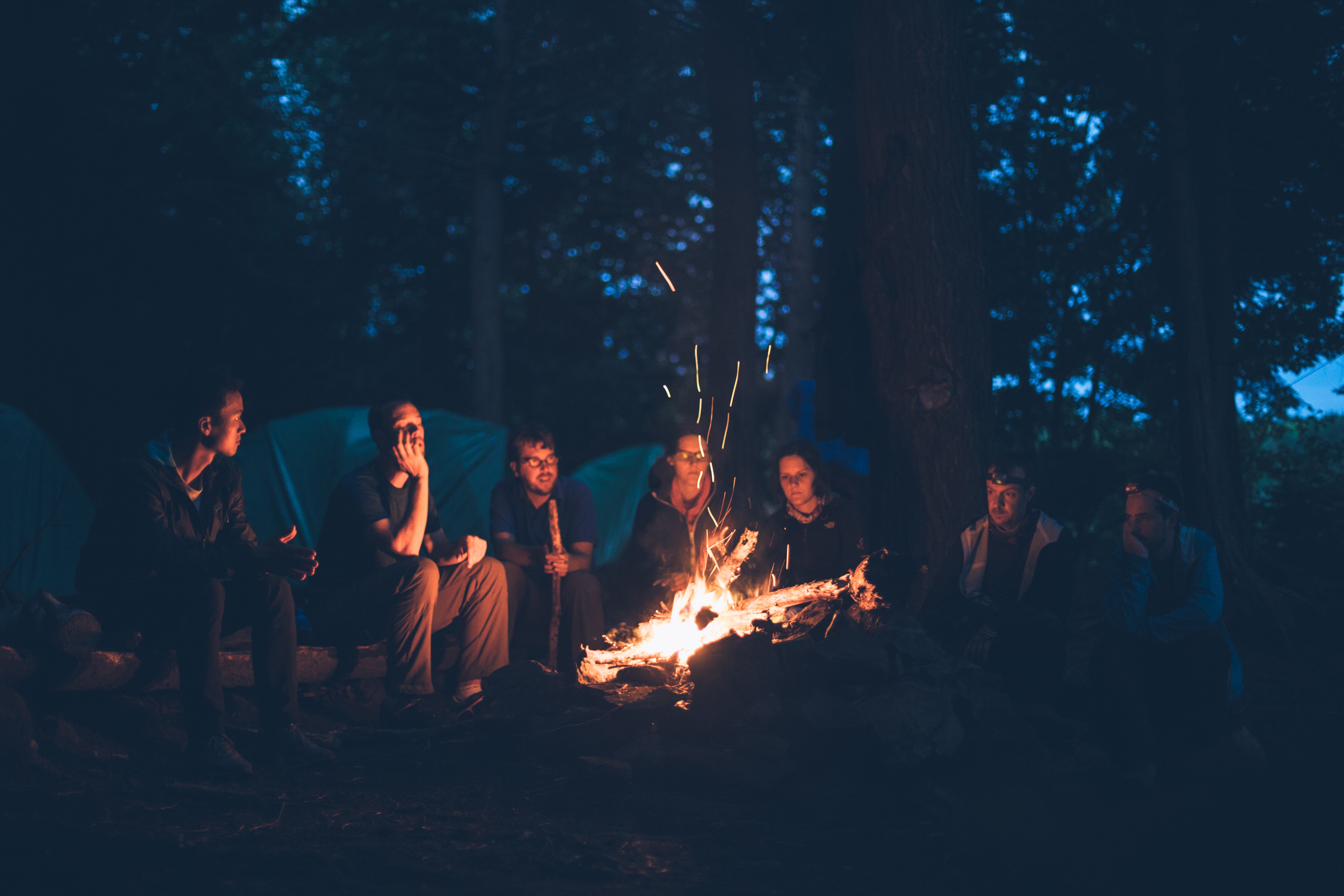Sitting around a campfire seems to provoke the telling of tales. Not from a book, but simply from memory. How many happy recollections do we have of staring into the embers, watching the flames rise toward a starry sky, and listening to the calm voice of the storyteller? This tradition began long ago. Campfires were gathering places as well as areas of safety, areas of light. Perhaps you are the storyteller of the group, or you want to be.
- Set the mood. Wait until dusk or dark, when you’ll be surrounded by the mysterious shadows and muted sounds of nature. It’s easier to evoke emotion from listeners when there is less to see and fewer distractions. The darkness tends to help bring stories to life, as imaginations are less inhibited and more likely to “come alive” against the black canvas around the group.
- Use details from the current surroundings. Whether you make up your own story or use an existing story, incorporating details about the area you’re in, the weather, and the wildlife will make your story more real. If it’s been cold, make the weather cold in the story. If you’re near a beach, describe the sound of the waves lapping against the shore.
- Be in close proximity. People naturally get close to a campfire for warmth and light, so this one is easy. A story is more effective when the storyteller is near the listener. Kids, especially, should be nearest the storyteller.
- Pace and timing. Take your take weaving the tale. Offer lots of details to set the scene and chain of events. Timing is everything. Use inflections in your voice. Whisper. Yell! Leave in dramatic pauses at junctions or times of suspense in the story.
THREE MICHIGAN-BASED STORIES TO TELL AROUND THE CAMPFIRE
Many tall tales, ghost stories, and Native American folklore are at the ready for you to memorize and relay around the next evening campfire. Below are examples of each.
Tall Tale: Since he wasn’t able to find a suitable watering hole for his big blue ox, Babe, it’s said that the legendary lumberjack Paul Bunyan carved out his own troughs – creating the five Great Lakes. Another story about how the Great Lakes came to be also includes Paul Bunyan. It was a cold Michigan winter, and Paul lost his mittens. His hands were freezing from the cold, but he continued to fall trees anyway. When he was done, what was left was the state of Michigan – a land mass in the shape of a mitten. Poor Paul couldn’t think of anything but his lost mittens as he went about his work.
Ghost Story: Fort Mackinac on beautiful Mackinac Island is a Revolutionary War-era fort on the island that saw battle. So it’s not too surprising that there have been reports of mysterious orbs appearing in pictures. According to Click Detroit, “In the hospital, some have felt feelings of sadness and have seen apparitions of phantom limbs. The sound of crying babies is often heard, along with mysteriously moved furniture, and motion detectors set off with no one around. At the Officer’s Stone Quarters, ghostly children are said to be playing with toys, leaving them thrown around the floor in the morning.”
Native American: The white sandy beach of Bete Grise is located in the Upper Peninsula on the south side of the Keweenaw Peninsula. It’s a top spot to relax on Lake Superior, but it’s also known for its singing sands. Legend says a Native American woman lost her love to Lake Superior and, because she spent the rest of her life on the beach crying and calling out to him, the white sand still calls to him to this day. You can reawaken her voice by making the sand sing with the palm of your hand, by patting or brushing the surface. This only seems to work if you’re on the beach at Bete Grise – a mystery in itself!

